Introduced in 1973, the R90S is considered by many to be one of the first superbikes, and the first such motorcycle from BMW. The first United States AMA Superbike Championship was won in 1976 by British rider Reg Pridmore on a R90S. The motorcycle offered features the oil filter system patented by Woody Shrider. Offered on a Certificate of Title.
Over 33 years ago, in 1976, Peter Adams, owner of BMW’s US importers, Butler Smith, decided to confront the same issue, which led to BMW dominating the first-ever Superbike championship, with its team of R90S Boxers, brewed in-house at Butler Smith’s New Jersey HQ by an RD team, led by Udo Geitl, with mechanics Todd Schuster and Kenny Augustine.
Not only did BMW rider Steve McLaughlin – the man who, a decade later, created the World Superbike series – win the first-ever Daytona Superbike race from team-mate Reg Pridmore, but it was the California-based Pridmore, a transplanted British sidecar driver, who went on to clinch the inaugural AMA Superbike title.
1976 was the battling Boxers’ single Superbike season in the sun, and came as the culmination of a five-year race programme, funded by the Adams family after they purchased New Jersey-based Butler Smith in 1971. It was aimed at removing the stuffy pipe-and-slippers image and rejuvenating sluggish sales of its R75/5 roadsters.
Initially they funded their parts manager, and part-time racer, German-born former NASA engineer Udo Geitl, to develop a F750 racer, based on the 75/5 Boxer, which was outclassed by Suzuki and Kawasaki two-strokes in AMA Nationals. Even wrapping the Geitl-tuned motor in a Rob North chassis for 1974, didn’t improve matters, and the debut that year of the Yamaha TZ750 simply meant that, like all four-strokes, the BMW racers were outclassed. Gary Fisher’s achievement in qualifying his Rob North BMW on the front row of the grid for the tight, twisty Laguna Seca AMA National in 1975, then battling for the lead with future world champion Kenny Roberts’ Yamaha, before the BMW’s monoshock suspension failed, represented a glorious finale.
The 1974 arrival of the R90S in the BMW range presented Butler Smith with a much better arena for demonstrating the worth of its products. The new 898cc Boxer was more than capable of competing on equal terms in the Heavyweight Production class. With Butler Smith’s new LA office now headed by the company’s former service manager and race fan Helmut Kern, backed by sales manager Matt Capri, the way to promote BMW’s new sportbike was to go production racing, and win.
Reg Pridmore’s success racing the R75/5 in Californian 750cc and Open Production events, for Butler Smith’s West Coast office, had already led to his nomination by Geitl to race the unsuccessful F750 bikes for the team, run out of the firm’s East Coast HQ. But the R90S was a different matter, and in a one-off AMA National ride at Ontario in 1974 he finished so far in front of second place finisher, Yvon DuHamel, and third placed man Steve McLaughlin, on their Kawasakis, that they were shocked to see him in Victory Lane. “What are you doing here?” asked DuHamel, “I thought you crashed?” Pridmore continued to race the BMW in Heavyweight Production races with some success, finishing fourth at Daytona in 1975 – but it wasn’t until the AMA created the Superbike series that BMW really made its mark.
With the TZ Yamaha swamping F750 entry lists and AMA Nationals, proving a switch off for four-stroke focused race fans, the AMA decided to establish the new Superbike class for 1976 for modified street bikes, and Peter Adams came up with a budget reputed to be a then massive $250,000 for Butler Smith to win the title.
The three bikes made their debut at Daytona in March 1976, in the hands of Pridmore, two-stroke racer Gary Fisher, and Californian Steve McLaughlin. Originally Geitl intended to run two bikes, but Peter Adams wanted to try to fill Victory Lane with BMW Boxers, and insisted on a third rider chosen by the company’s Californian office. Serious internal rivalry existed between the company’s two geographic opposites.
Which explains why Kern and Capri were astounded to discover that Geitl had developed a monoshock rear suspension for two of the three Superbikes, after a creative reading of the Superbike rulebook which he helped draft, as a member of the AMA Committee.
Pridmore declined to race with a monoshock, on the grounds that he couldn’t get on with it, though it was widely speculated that BMW welcomed this in case the tech inspectors rejected Geitl’s interpretation of the rulebook.
All AMA road race grids were determined by heat races, and these, held on Thursday saw Peter Adams’ wish for a one-two-three BMW blanket finish come true, with Fisher an easy winner, Pridmore second and McLaughlin close behind. Cook Neilson (883 Desmo Ducati) finished fourth, ahead of Mike Baldwin on Reno Leoni’s Moto Guzzi 850.
The final saw Neilson lead off the line, before dropping back as Fisher passed him on the BMW, followed by McLaughlin and Pridmore. Fisher continued to lead until a loose exhaust clamp rotated and interfered with his gearchange, causing him to miss gears, leading to a broken rocker.
McLaughlin now had the lead, and being a student of the ‘Art of the Draft’, and knowing he had no chance of pulling away allowed Pridmore to lead into the last lap, then lined up to slipstream past on the banking before the finish line. He almost didn’t make it, rubbing cylinders with his team-mate as they droned towards the stripe. In the final few yards the West Coast monoshock bike went ahead, for McLaughlin to win by three inches, or less than the width of a tyre.
The Ducati was third, Wes Cooley’s Yoshimura Kawasaki fourth and Baldwin’s Guzzi fifth.
The publicity for this one-two victory, at a crucial time in the calendar, would have justified Adams’ investment, with dealers selling R90S as fast as Butler Smith could deliver them. BMW’s fuddy-duddy reputation transformed overnight.
But there was still a championship to be won, and in the next round at Loudoun, Baldwin scored a decisive victory over Pridmore on the BMW. Daytona-winner McLaughlin sheared the flywheel off his Boxer.
For the third round at Laguna Seca Geitl equipped the three BMWs with much larger Hurst-Airheart front brakes, matched to Lockheed two-piston calipers. Fisher retired early with a leaking oil cooler, leaving Pridmore and McLaughlin to battle for victory.
On the final lap, with Pridmore ahead, McLaughlin experienced the full potential of the better brakes to the max, performing a gigantic stoppie to avoid ramming his team-mate. The Daytona-winning bike cart wheeled and flew through the air having already decanted its rider. Photographer Mush Emmins was there to capture the moment and when it appeared in California’s leading daily paper, the Los Angeles Times it made McLaughlin famous outside the world of motorcycling, for all the wrong reasons!
Pridmore went on to win the race and the inaugural AMA Superbike title with another victory in the final round at Riverside, his home track.
With the PR mission accomplished and the BMW image transformed, Butler Smith race mechanic Todd Schuster’s ‘Bavarian Murder Weapons’ tag summed it up nicely. Peter Adams shut the race operation down, sending the three Butler Smith bikes out West, where they ended up in the hands of various BMW dealers.
The rebuilt McLaughlin Daytona-winner went on to take victory in the hands of Ron Pierce in the 1977 Loudoun AMA Superbike National, a win repeated the following year on the same track by Harry Klinzmann on the Fisher bike, by now owned by San Jose BMW, the German marque’s final race victory in AMA Superbike.
Adams appointed Geitl as BS Service School Manager, but with permission to continue running a new bike at his own expense in conjunction with Todd Schuster, first with McLaughlin, then in 1978, John Long. In the final chapter Long won the Canadian Superbike title, and tied with the now Kawasaki-mounted Reg Pridmore for the AMA championship, before being declared the winner on count back.
Several months later Long’s title was rescinded, owing to a purported start line error at Loudoun, when the BMW rider was waved into the wrong place on the grid by an AMA official. To most minds BMW actually won two AMA Superbike titles with their improbably successful battling Boxers.
TECHNICAL SPECIFICATION
ENGINE Air-cooled pushrod ohv 180 degree Boxer twin cylinder 4-stroke
DIMENSIONS 95 x 70.6mm
CAPACITY 1001cc
OUTPUT 102bhp @ 8600rpm (at clutch)
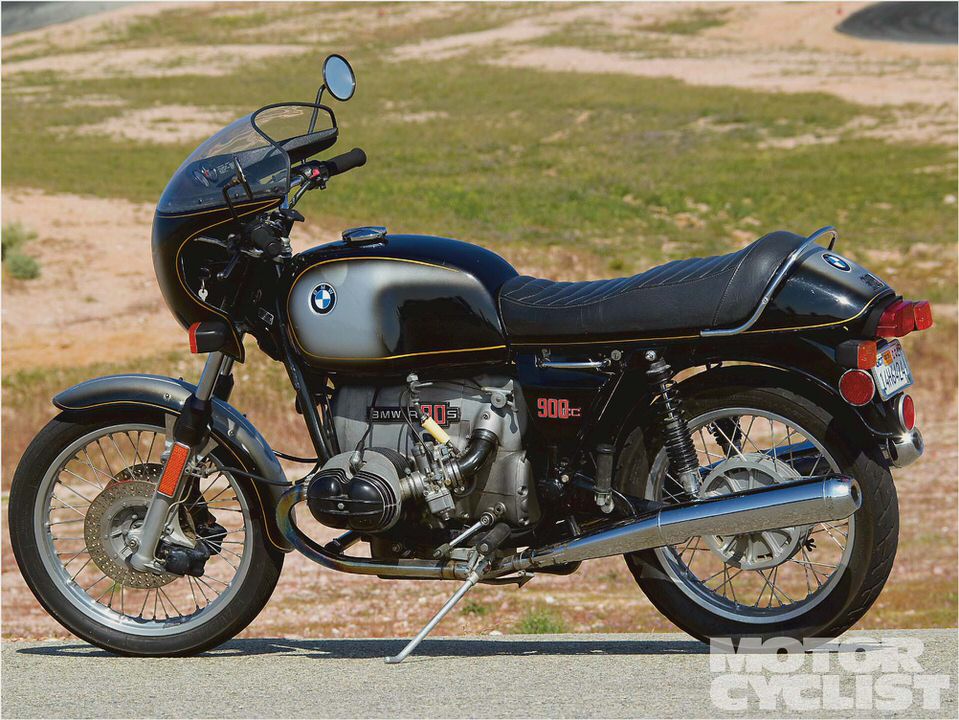
COMPRESSION RATIO 12.6:1
CARBURATION 2 x 40mm Dell’Orto with accelerator pumps
IGNITION Bosch CDI with dual ignition and 4 coils
GEARBOX 5-speed close-ratio with shaft final drive
CLUTCH Single-plate all-metal diaphragm with steel flywheel unit
CHASSIS Tubular steel duplex cradle with dual reinforcement struts
SUSPENSION Front: 36mm BMW leading-axle telescopic forks with three triple-clamps
Rear: Tubular steel swingarm incorporating shaft final drive inside right leg, with cantilever Koni monoshock
HEAD ANGLE 28 degrees
Wheelbase 1465mm
Weight 175kg with oil, no fuel
WEIGHT DISTRIBUTION 48/52 per cent with 12 litres fuel
BRAKES Front: 2 x 290mm Hurst-Airheart steel discs with 2P Lockheed calipers Rear: 200mm BMW single leading-shoe drum
WHEELS/TYRES Front: 110/60-18 Metzeler Lasertec on 2.65in WM4 wire- spoked rim
Rear: 130/80-18 Metzeler Lasertec on 3in WM5 wire- spoked rim
TOP SPEED 144.5mph/233kph (Daytona 1976)
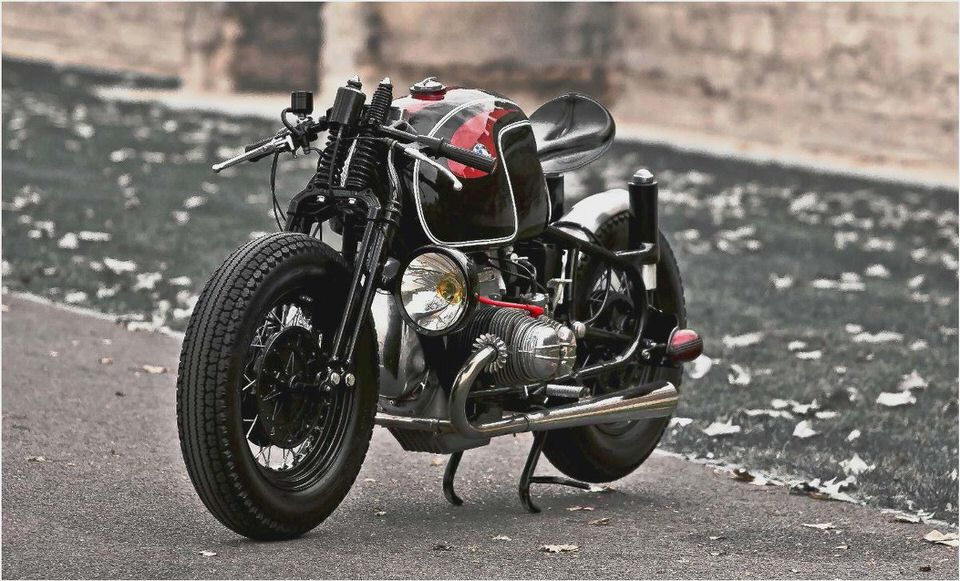
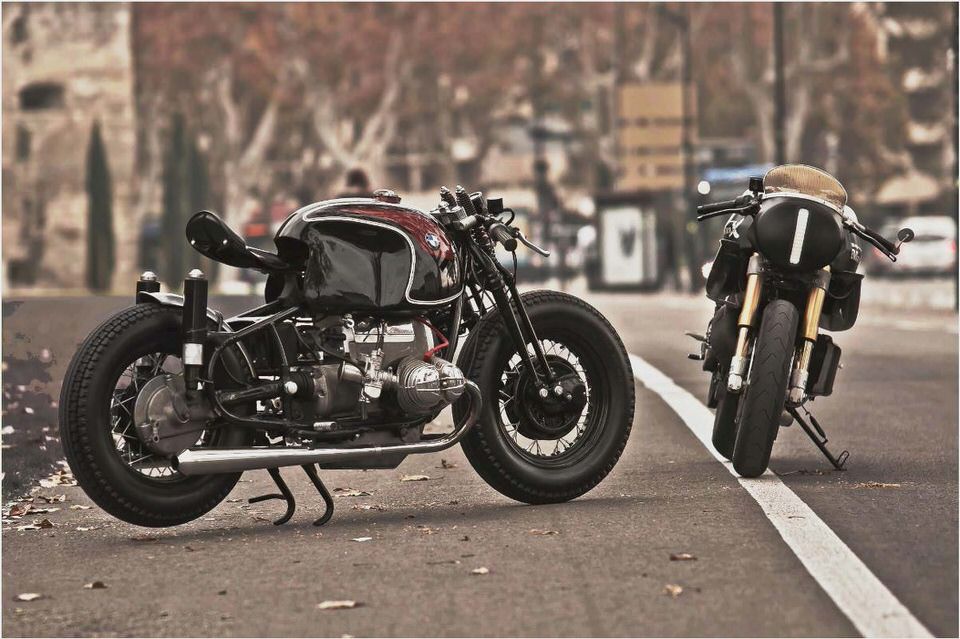
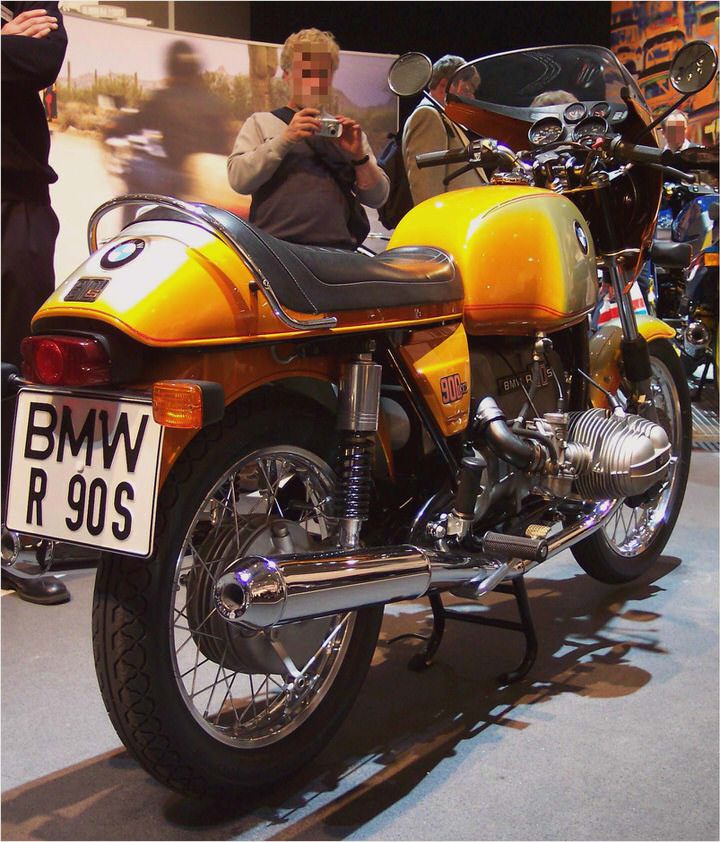
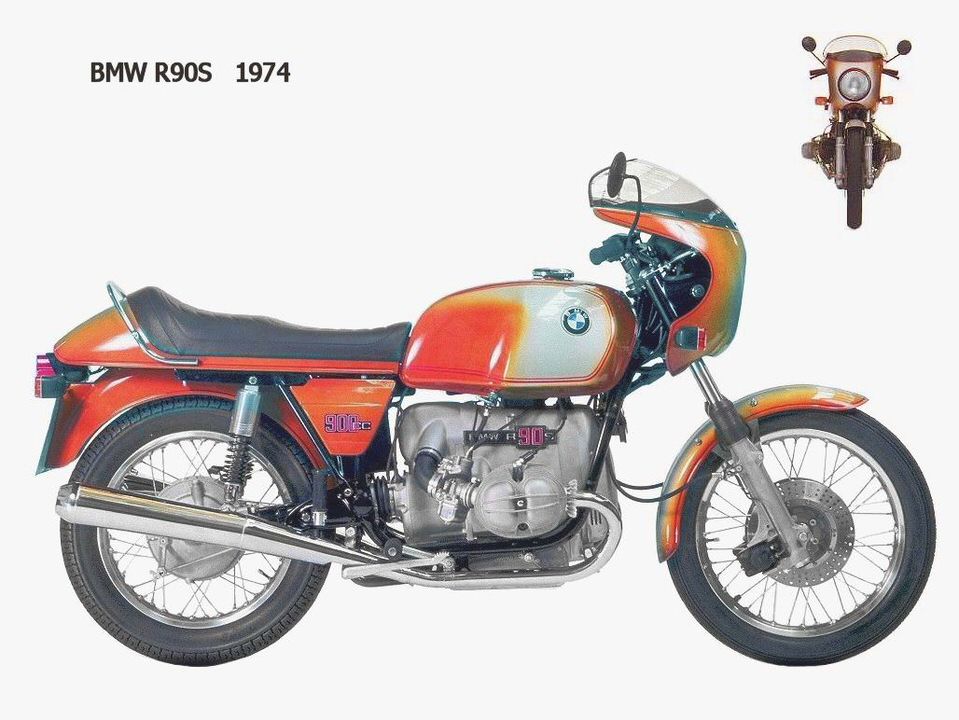
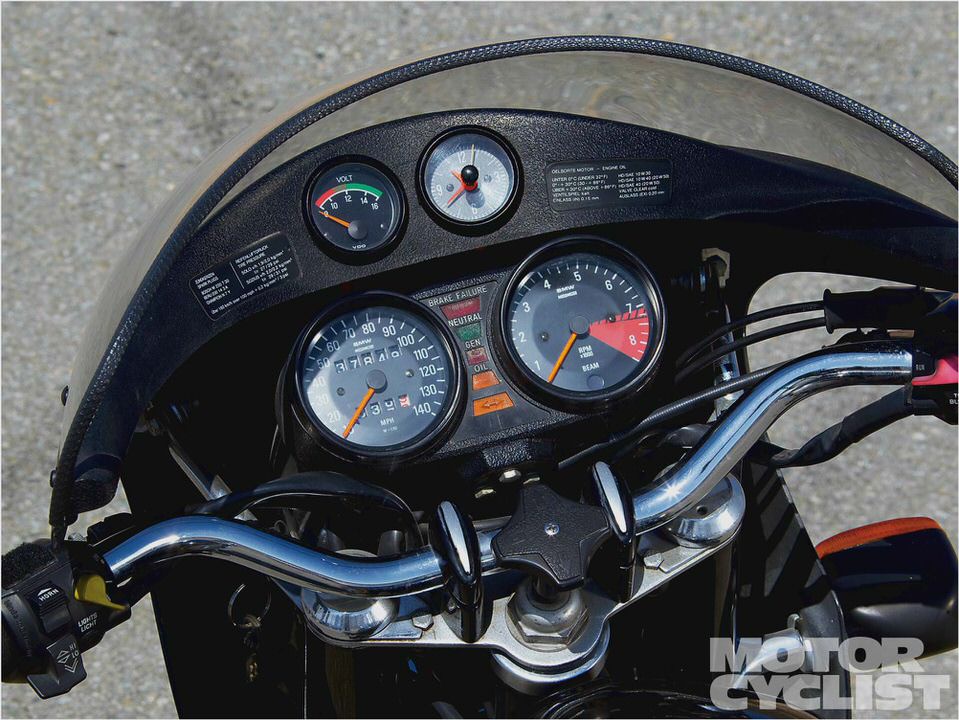
- 1966 BMW R60/2
- BMW R100RS by C59R Cafe Racer Motorcycles – Moto Rivista
- 2014 BMW M6 Competition Package – European Car Magazine
- Bmw Gsx 650
- BMW is wrong: Rotate your tires to extend wear, reduce noise – Wheels.ca
